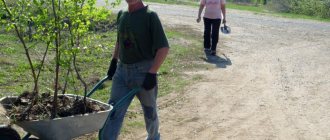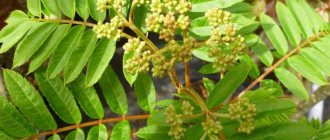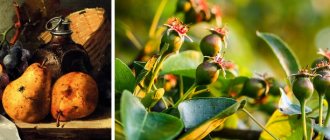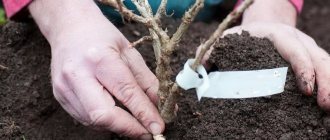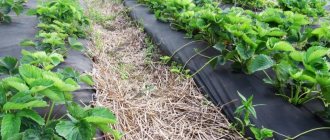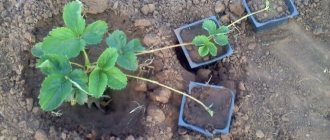Author: Natalya Category: Fruit and berry plants Published: September 30, 2016Republished: February 28, 2019Last edits: November 2, 2020
- Preparing for landing
- Autumn planting rules
- When to replant strawberries
- Watering
Strawberries are one of the most attractive garden berries, with excellent taste and bright aroma. It is one of the first to ripen and, due to the antioxidants and microelements it contains, is a vitamin salvation for the human body weakened over the winter. But strawberries also have disadvantages - they are whimsical and capricious, so only experienced gardeners can grow them safely from year to year. However, for a person who is ready to learn, nothing is impossible, and yesterday’s beginner can tomorrow cope with a more difficult task than growing strawberries. In this article, we are ready to share with you a few secrets about how to plant and care for strawberries in the fall.
When to plant strawberries in the fall
Autumn planting dates
Strawberries are planted in open ground both in spring and autumn. Spring planting is carried out from mid-April to early May, and autumn planting from late July to early September, although the timing of planting strawberries in different regions may shift in one direction or another.
To the question of when is the best time to plant strawberries, you can answer that in most areas, autumn planting of strawberries is considered the most successful - at this time, gardeners have more time, since the deadlines are extended to a month and a half, there is plenty of planting material, and the weather is favorable for the rooting of strawberry plants. sockets In addition, strawberries planted in the fall can produce a harvest next year, but if you plant strawberries in the spring, there will be no berries this year.
When to plant strawberries in the regions
In the middle zone and the Far East, weather permitting, autumn planting of strawberries is carried out from the beginning of August to the end of September. In the southern regions of Russia, Ukraine and Moldova, autumn planting of strawberries is carried out until the end of October; in Siberia, the so-called autumn planting should be completed before August 10, or at least before the end of summer. In the Urals, the autumn planting time for strawberries is from the end of July to the first ten days of September.
- Spring pruning of bushes
Basic mistakes
Below we discuss typical mistakes that are made during the autumn care of strawberries; familiarizing yourself with them will help prevent their recurrence in the future:
- Providing winter protection only for bushes, but not for row spacing. This measure is especially important in areas characterized by cold winters with little snowfall, as this contributes to the formation of deep cracks in the soil surface.
- Covering strawberries in the southern regions. In the absence of severe frosts due to the climatic characteristics of the area, this is not only unnecessary, but also a very dangerous procedure, which often leads to rotting of the strawberries.
- No feeding if the plant looks healthy. Fertilizer application is still required to provide strawberries with the necessary set of chemical elements that will strengthen them and ensure good yield for the next season.
Planting strawberries in the ground in autumn
Preparing for landing
To plant strawberries, you can purchase varietal seedlings at a nursery, or you can take planting material from your own garden bed. A good strawberry seedling should have 3-4 healthy leaves (the rest should be removed) and roots about 10 cm long (if the roots are longer, shorten them to normal). Immediately before planting, the roots of each seedling are dipped into a mash of the consistency of liquid sour cream made from humus and soil, diluted with water with the addition of a growth regulator - Epin, Kornevin, Mikras or Zircon.
After which you can plant strawberries
If you are planting strawberries in the ground for the first time, you need to choose the right site for it. It should be well lit by the sun, but at the same time be protected from the wind. The best place is on the southwest side with a slope of 2-3º. It is of great importance what crops were grown on the site before the strawberries.
Green manure, mustard, beans, peas, radishes, radishes, carrots, celery, parsley, onions and garlic are considered good predecessors.
It is not advisable to plant strawberries where tomatoes, potatoes, eggplants, cabbage, peppers, cucumbers, asteraceae (asters, dahlias, marigolds, marigolds, daisies, sunflowers, artichokes, cornflowers, burdock, dandelions, lettuce, chicory, Jerusalem artichoke and others) and ranunculaceae (buttercup, aquilegia, anemone, aconite, clematis, delphinium, spring flower, hellebore and others).
Is it possible to plant strawberries after strawberries? Strawberries are grown in one area for no longer than four years, and then they are transplanted to another area.
Soil for strawberries
When planning to plant strawberries, you must first prepare the soil for them. The soil for strawberries must be fertile, rich in nutrients, because in one place the bushes will grow and bear fruit for 3-4 years. Soil acidity should be within 5-6.5 units, and the groundwater level should not be higher than 60 cm.
Before planting, the soil is checked for the presence of wireworms and Colorado potato beetle larvae, especially if your site is located near a forest belt. And if the test gives a positive result, add ammonium nitrate to the soil a month before planting or spill the soil on the site with a solution of Confidor, Marshall or Bazudin.
Dig up the site two weeks before planting to a depth of 25-30 cm, adding 10-20 kg of humus or rotted manure, 15 g of potassium chloride and 30 g of superphosphate for each m² of digging. In acidic soils, a year or two before planting strawberries, add 4 to 6 kg of lime per m².
Immediately before planting strawberries in the ground, the soil on the site is loosened to a depth of 15 cm.
Choosing a location on the site
Well-lit places where beans, beets, carrots, lettuce, garlic, radishes, celery, and dill previously grew are ideal for strawberry bushes. But in areas after peppers and potatoes, cabbage and eggplants, it is not recommended to plant strawberries.
Any type of soil except wetlands can be suitable for this crop. A slightly larger harvest and larger berries grow on loam, black soil, and sandy loam soils. An ideal harvest can be obtained even on heavy soils by adding peat, humus, manure or ash. It is desirable that the soil has an acidity in the range of – 5.5 – 6.5 pH.
How to plant strawberries in the fall
Autumn planting rules
How to plant strawberries in the fall? Proper planting of strawberries in the fall is done in the evening or on a cloudy day. Strawberries are planted in furrows spilled with water, made with a hoe along a stretched cord.
At what distance should I plant strawberries? The strawberry planting scheme looks like this: the distance between furrows should be 60-80 cm, and between seedlings in a row - 15-20 cm. With this planting, the plants overwinter better, close faster and bear fruit well. Dip the roots of the seedlings, treated with a clay mash, vertically into the soil and embed them, leaving the hearts above the surface. Press the soil around the bushes so that they are not easily pulled out, and mulch the area with humus or peat.
Planting strawberries with a mustache in open ground
For planting, you can take seedlings grown from your own strawberries: after fruiting, select healthy bushes two years old, which this year did not produce a very large harvest, dig the first 2-4 tendrils extending from them into cups and, when they take root, pinch off the tendrils that grow further. . By the time of planting, you will already have strong seedlings with roots in a glass, and all you have to do is remove excess leaves from the seedlings.
The sockets are installed in the same way as described in the previous section. Do not take rosettes from bushes that bore fruit abundantly this year, since they are unlikely to produce rosettes that are promising for planting: in one growing season, a bush can either produce a full-fledged harvest of berries or full-fledged seedlings.
- How and when to plant strawberry seeds for seedlings
Planting strawberries on agrofibre
Many gardeners prefer to plant strawberries under agrofibre. Planting strawberries under black covering material is carried out in order to reduce labor costs and increase yields by about a third. This topic deserves a separate article, but we will briefly tell you what the essence of the agricultural technique is.
Agrofibre saves strawberries from weeds and serves as protection from drought, snow, rain and other unpleasant phenomena. This environmentally friendly covering material is extremely resistant to ultraviolet rays and has qualities such as air and water permeability. It can be used to mulch the root zones of garden shrubs and trees.
The width of the agrofibre is 1.6 m or 3.2 m, so it is advisable to make the strawberry bed so wide that it can be covered with one strip of material. If your beds are wider, you will have to connect the strips of fabric not end-to-end, but overlapping with an overlap of at least 20 cm. Prepare the bed as described above and carry out deep loosening of the soil - for the next 3-4 years you will not have to dig the ground under the fiber . Add organic matter and mineral fertilizers to the soil in advance - fertilizing strawberries when planting is undesirable.
Divide the wire into pieces 70-80 cm long and bend each of them in half - these will be the pins with which you will secure the covering material. Lay agrofibre on the bed, attach it with pins to the ground along the perimeter and along the line of connection of the strips and press down the corners and joints with stones, boards or paving slabs. If the area covered with fiber is too wide, lay paths of boards or tiles along it so that you can reach each bush from the aisle.
Place chalk marks on the fiber in the places where the bushes will be planted, make a cross-shaped cut with a knife in place of the marks and bend the resulting corners outward. How to properly plant strawberries under (or on) agrofibre? Make holes in the soil under the cross-shaped cuts, plant strawberries in them as described, bend the corners of agrofibre into the holes, fill the holes with soil and water each bush with water. Remember that strawberries do not like deep planting - the heart of the bush should remain above the surface.
Landing rules
In the fall, both young plants in the form of mustaches grown from the mother bush, and already mature ones, which for one reason or another need to be moved to another place, take root well.
Planting a mustache
You can plant both already rooted mustaches and those with open, developed roots. The main thing is that they must be strong and large enough, so for propagation they take those rosettes that formed first and are closest to the mother bush. The rest is cut off so that excess vegetation does not take away the strength of the seedlings.
It is better to remove the second and subsequent rosettes on the whiskers immediately when they appear, leaving only the first ones, then they will receive maximum nutrition and will better survive jigging
Choose a one- or two-line planting scheme:
- With a single line, 35 cm are left between seedlings, and row spacing is made 1 meter wide.
- With a two-line system - 35 between plants, 40 cm between rows and 1 m - passages between beds.
If there are few seedlings, you can dig holes for each. If the planting area is large, it is easier to make furrows and place the bushes in them at a specified distance.
The depth of the holes or furrows should be such that the roots are completely in the ground, but the growing point is above it. If it is too deep, the plant will rot, and if it is not deep enough, the roots will freeze in the winter.
Schemes for correct and incorrect planting of strawberries
Since when filling holes with seedlings the soil becomes loose again, it must be immediately compacted by pouring and pressing well around the plants. Thanks to this, it will no longer settle and will adhere better to the roots.
Having finished planting, the plants are watered abundantly.
Transplantation and rejuvenation of adult bushes
It may be necessary to transplant strawberries to another bed if you need to replace dead or diseased plants or fill empty spaces. Or if it is necessary to propagate varieties that do not produce whiskers.
More on the topic: Transplanting strawberries: how to replant correctly in summer
In such cases, adult plants are carefully dug up and divided into several parts, each of which must have a growth bud and a sufficient number of roots. Small young bushes can be replanted without dividing.
Holes for transplanting with a diameter of about 40 cm and a depth of 15-20 cm are prepared before starting to dig strawberries from the old bed, in order to transfer them from one place to another as quickly as possible and prevent the roots from becoming windy.
When digging up bushes, they try not to damage the roots, for which purpose they are first watered well, and when the water is absorbed, they dig in with a shovel from four sides to the depth of a bayonet. If the plant is transplanted without division, it is transferred to a new hole along with a lump of earth. If the bushes need to be rejuvenated, shake off the soil and carefully disassemble them into sections.
After clearing the soil, parts of the bush are clearly visible and can be separated from each other.
Roots that are too long can be cut off, but not by more than a third. Old, dried or rotten roots are also trimmed with sharp and clean pruners or scissors. You can also trim off the old leaves, leaving only 3-4 of the youngest leaves at the top.
To make it easier for strawberries to take root after such stress, the rhizomes can be kept in a root former solution - Kornevin, Epin, etc. - before planting.
The planting rules are the same: average depth, compaction of the soil around the roots and watering.
Transplanting strawberries in autumn
When to replant strawberries
As we have already written, strawberries can grow in one place for three or four years, and if you are interested in consistently high yields, after this period you need to change the plot for strawberries. Replanting will help you rejuvenate the bushes and rid the plants of crop-specific diseases and pests that have accumulated in the soil over three years.
You can replant strawberries throughout the growing season, but most gardeners prefer to do this after they bloom and bear fruit. In what month should strawberries be replanted in the fall? The best time to change the site is the end of August and September - at this time the ground is moist and well warmed by the sun, and the weather is already cool. Before the onset of cold weather, the plants will have time to take root, grow a rosette of leaves and go into winter stronger.
There is no point in moving old bushes to a new site. One-year or two-year-old bushes are replanted, as well as young strong shoots formed on the mustache. Two-year-old bushes in a new place will produce a harvest the following year. The bush is placed in a hole or furrow filled with water, the roots of the seedling are straightened, after which they are sprinkled with soil and the surface around the bush is lightly tamped, then the bed is mulched with peat or humus.
The most popular varieties
The abundance of varieties available in the market can be dizzying. There are ampelous strawberries (curly, with long fruiting tendrils) and traditional ones. The main selection criteria are yield, quality characteristics of the berry and fruiting time.
Strawberries can be divided into traditionally fruiting and remontant. Traditionally fruiting varieties bloom in early spring and bear fruit at the turn of spring and summer. In mild climates they may bear fruit again in early autumn, however this is a small harvest. Among them there are early, middle and late varieties. To ensure strawberry harvest throughout the season, it is worth planting several varieties.
Remontant strawberry varieties that bear fruit repeatedly during the growing season deserve attention.
Good varieties are characterized by high resistance to diseases, especially to gray mold (which is especially important for amateur farming) and frost resistance. Of course, everyone wants to grow tasty and sweet berries with minimal use of chemical plant protection products.
- The best varieties of remontant strawberries: Moscow delicacy, Diamant, Temptation, Ruyana, Monterey.
- The most popular varieties on the market that demonstrate high disease resistance: sweet Dukat, Honey.
- Ampelous strawberries, especially very fruitful ones, look great as decorations in the garden and are also suitable for the balcony. Popular varieties: Queen Elizabeth, Tuscany, Home Delicacy.
It is advisable to choose varieties that are resistant to gray mold and diseases of the root system.
Autumn strawberry care
After planting or transplanting, caring for strawberries should have a single goal - to provide young bushes with the opportunity to grow a developed root system that will feed them in winter. This will require regular watering, loosening the soil around the bushes, weeding the area, pruning, treatment against pests and diseases, and shelter for the winter.
Details about growing strawberries from A to Z
Watering
The first week after planting, strawberries in open ground require frequent watering - two to three times a week. When rooting occurs, watering is reduced, but the soil is always kept slightly moist and loose. Watering is carried out in the morning with non-cold water. Water must be poured so that drops do not fall on the leaves.
How to feed strawberries
As for fertilizing strawberries, you will need to add fertilizers to the soil only in the third or even fourth year - bushes just planted in fertilized soil have enough nutrition.
Treatment
Strawberries in open ground need protection from diseases and pests. Treating strawberries for pests in the fall helps get rid of insects that have settled for the winter in the top layer of soil. Loosen the soil around the bushes to a depth of 6-8 cm and treat the area with a solution of three tablespoons of Karbofos in 10 liters of water heated to a temperature of 30 ºC. After treatment, cover the bed with film for three hours.
Diseases and pests of strawberries - how to deal with them
Treating strawberries against diseases in the fall is also necessary. It is carried out with the aim of destroying pathogens that survive the winter cold in the upper layer of soil. To destroy them, use two percent Bordeaux mixture or a solution of one tablespoon of copper oxychloride in 10 liters of water.
Opponents of the use of chemicals believe that treating strawberries with a composition with the following ingredients provides reliable protection from both pests and fungal infections:
- Kalanchoe - care, photos, types
- 10 liters of warm water;
- 2 tablespoons wood ash;
- 3 tablespoons of fried vegetable oil;
- 2 tablespoons vinegar;
- 2 cups of liquid soap.
The ingredients are thoroughly mixed into a homogeneous composition, which is used to treat the strawberry bed, trying to wet not only the leaves, but also the soil under the bushes.
Trimming
There is no need to cut off seedlings with two or three leaves that have just been planted in the ground for the winter; on the contrary, the fouling of the rosette with leaves is strongly encouraged. But if mustaches begin to grow on the strawberry, they need to be removed, because now there is no need for them, and the plant should spend its energy primarily on strengthening the root system.
Mulching strawberries
Immediately after planting in the ground, the soil around the bushes is mulched with peat or humus, but on the eve of winter, additional mulching of the strawberries is carried out.
Detailed article about caring for strawberries after harvest
Preparing strawberries for winter
With the onset of cold weather, you need to prepare your strawberries for winter in case there is little or no snow. To prevent strawberries from freezing in autumn and winter, and most importantly, to retain snow on the site, you need to cover the soil with straw or dry leaves. Peat, corn stalks, sawdust and spruce branches are also suitable as mulch. The thickness of the protective layer must be at least 5 cm.
Post-harvest care
After the entire harvest has been harvested and there are no more berries left on the bushes, you can begin processing them, which will consist of the following:
- Pruning all old or excess leaves, this procedure should be carried out extremely carefully so as not to accidentally damage the tendrils or healthy shoots. Early varieties are processed initially, since late ones can still bear the last harvest.
- If young, but darkened or curled leaves are found , the bushes will need to be treated with acaricides, since such symptoms are the first sign of the activity of a parasitic mite.
- The soil located between the strawberry bushes must be thoroughly loosened to a depth of at least 10 cm. It is not recommended to approach the bushes, since there is a risk of damaging the root shoots that are located too close to the soil surface.
- In parallel with loosening the soil, you can lightly hill up the strawberries so that the regrown root system is slightly covered with a small layer of soil.
- The soil should be mulched; for these purposes it is best to use peat, but it should be added to the soil in moderation so that its acidity level does not increase. This procedure will prevent the soil from drying out and the formation of a crust on its surface, which can disrupt air exchange and cause oxygen starvation of the root system.
- The soil is watered abundantly; it is better to do this after adding fertilizers to it, so that they penetrate deep into the soil and quickly begin to be absorbed into the roots of the bushes. Watering should not be too strong, since moisture accumulation can lead to waterlogging of the beds and rotting of the root system. It will need to be stopped at the moment when the water stops being absorbed into the ground.
Preparation of seedlings
Both material purchased from a special nursery and material collected at home are suitable as planting material. A good healthy seedling has at least 3 healthy leaves, and the average root length is about 10 cm.
If some roots are very long, they can be trimmed. In order for the bush to quickly take root and be less susceptible to damage by pests and diseases, the roots of each plant, before planting, must be kept in a mixture of humus and soil, to which water and growth stimulants have been added: Epin or Micras.
Breeders have developed dozens of strawberry varieties that are ideal for planting in open ground. Some of the most famous: “Rusapovka”, “Zarya”, “Talisman”, “Pocahontas”, “Zengan-Zengan”.



